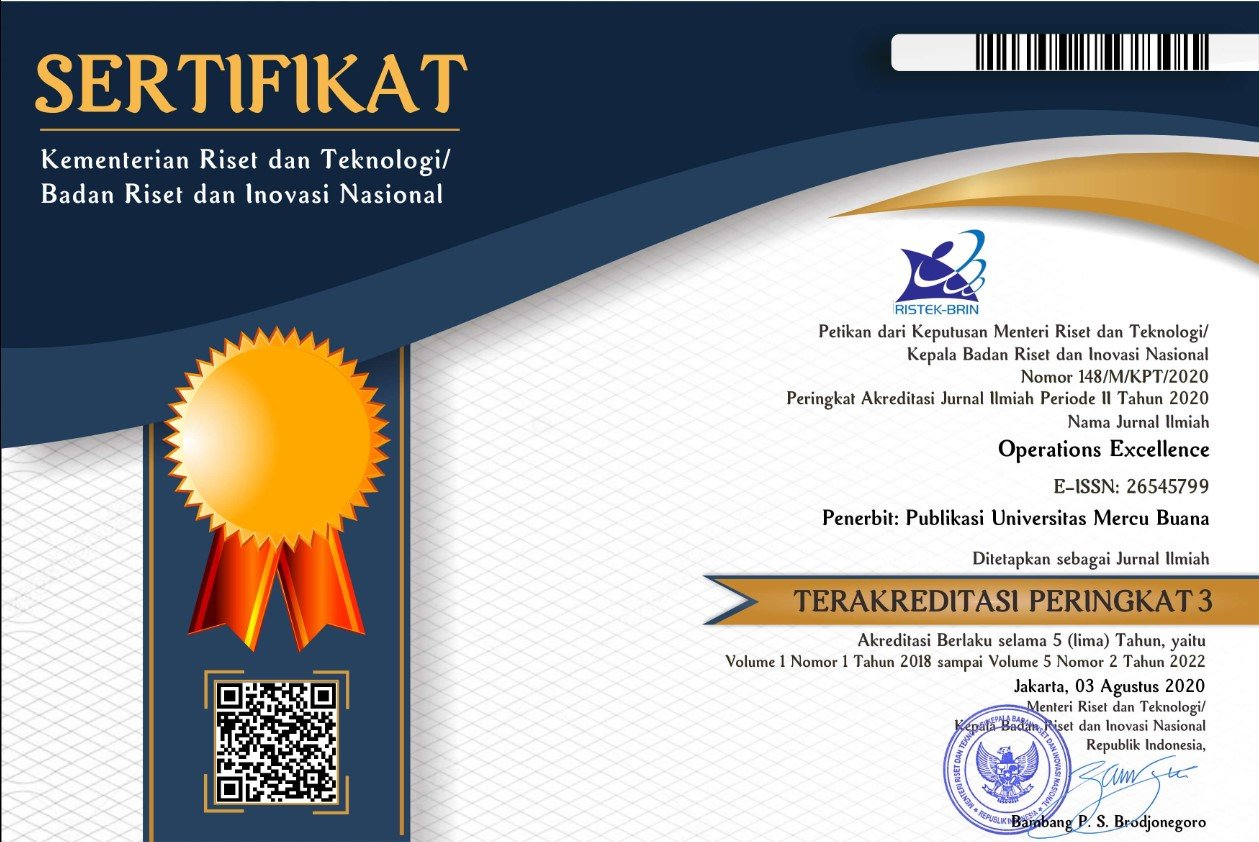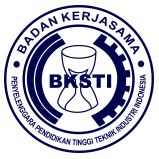Battery pack remanufacturing decisions considering remanufacturing costs and risk priority number in determining repair or replacement
Abstract
The growth of electric vehicles is accompanied by an increase in the number of batteries and battery waste produced, which can ultimately have harmful effects on the environment. As a solution, battery pack remanufacturing has emerged as an effective alternative. However, challenges in the remanufacturing process include determining which battery pack components can be repaired and which require replacement with new components, ensuring that remanufacturing costs remain low while preventing potential future failures. This study aims to develop a remanufacturing decision model that integrates Failure Mode and Effect Analysis (FMEA) with a remanufacturing cost model. The study’s results outline the relationship between failure modes and battery pack components, whereby each failure mode can be classified to determine appropriate repair or replacement actions. While specific actions have been formulated, remanufacturing costs remain the final determinant in the overall battery remanufacturing decision. Based on the analysis, repairs or replacement of new part on 13 components associated with failure modes still render the battery pack suitable for remanufacturing, with a potential cost saving of more than 40% compared to purchasing a new battery pack.
Keywords
Full Text:
PDFReferences
Andrew-Munot, M., & Ibrahim, R. N. (2013). Remanufacturing Process and Its Challenges. JOURNAL OF MECHANICAL ENGINEERING AND SCIENCES, 4, 488–495. https://doi.org/10.15282/jmes.4.2013.13.0046
Baxter, J., Callewaert, P., & Danielsen, R. (2024). Accounting the effects of product reuse and repair in life-cycle assessment. Cleaner Engineering and Technology, 21, 100774. https://doi.org/10.1016/j.clet.2024.100774
Börner, M. F., Frieges, M. H., Späth, B., Spütz, K., Heimes, H. H., Sauer, D. U., & Li, W. (2022). Challenges of second-life concepts for retired electric vehicle batteries. Cell Reports Physical Science, 3(10), 101095. https://doi.org/10.1016/j.xcrp.2022.101095
Bubbico, R., Greco, V., & Menale, C. (2018). Hazardous scenarios identification for Li-ion secondary batteries. Safety Science, 108, 72–88. https://doi.org/10.1016/j.ssci.2018.04.024
Chen, Y., Kang, Y., Zhao, Y., Wang, L., Liu, J., Li, Y., Liang, Z., He, X., Li, X., Tavajohi, N., & Li, B. (2021). A review of lithium-ion battery safety concerns: The issues, strategies, and testing standards. Journal of Energy Chemistry, 59, 83–99. https://doi.org/10.1016/j.jechem.2020.10.017
Chigbu, B. I., Nekhwevha, F. H., & Umejesi, I. (2024). Electric Vehicle Battery Remanufacturing: Circular Economy Leadership and Workforce Development. World Electric Vehicle Journal, 15(10), 441. https://doi.org/10.3390/wevj15100441
Foster, M., Isely, P., Standridge, C. R., & Hasan, M. M. (2014a). Feasibility assessment of remanufacturing, repurposing, and recycling of end of vehicle application lithium-ion batteries. Journal of Industrial Engineering and Management, 7(3). https://doi.org/10.3926/jiem.939
Harper, G., Sommerville, R., Kendrick, E., Driscoll, L., Slater, P., Stolkin, R., Walton, A., Christensen, P., Heidrich, O., Lambert, S., Abbott, A., Ryder, K., Gaines, L., & Anderson, P. (2019). Recycling lithium-ion batteries from electric vehicles. Nature, 575(7781), 75–86. https://doi.org/10.1038/s41586-019-1682-5
Hosianna, G. R., Hasibuan, S., & Hidayati, J. (2021). Analisa risiko rantai pasok produk kosmetik sistem make to order dengan metode House of Risk. Jurnal Operations Excellence: Journal of Applied Industrial Engineering, 13(3), 288-297.
Johnson, M. R., & McCarthy, I. P. (2014). Product recovery decisions within the context of Extended Producer Responsibility. Journal of Engineering and Technology Management, 34, 9–28. https://doi.org/10.1016/j.jengtecman.2013.11.002
Kampker, A., Wessel, S., Fiedler, F., & Maltoni, F. (2021). Battery pack remanufacturing process up to cell level with sorting and repurposing of battery cells. Journal of Remanufacturing, 11(1). https://doi.org/10.1007/s13243-020-00088-6
Kirana, R. C., Purwanto, N. A., Azis, N. A., Joelianto, E., Santosa, S. P., Budiman, B. A., Nguyen, L. H., & Turnip, A. (2023). Failure assessment in lithium-ion battery packs in electric vehicles using the failure modes and effects analysis (FMEA) approach. Journal of Mechatronics, Electrical Power, and Vehicular Technology, 14(1), 94–104. https://doi.org/10.14203/j.mev.2023.v14.94-104
Li, J. (2023). Economic analysis of retired batteries of electric vehicles applied to grid energy storage. International Journal of Low-Carbon Technologies, 18, 896–901. https://doi.org/10.1093/ijlct/ctad076
Mathew, M., Kong, Q. H., McGrory, J., & Fowler, M. (2017). Simulation of lithium ion battery replacement in a battery pack for application in electric vehicles. Journal of Power Sources, 349, 94–104. https://doi.org/10.1016/j.jpowsour.2017.03.010
Naor, M. (2023). Tesla’s Circular Economy Strategy to Recycle, Reduce, Reuse, Repurpose and Recover Batteries. In Recycling Strategy and Challenges Associated with Waste Management Towards Sustaining the World. IntechOpen. https://doi.org/10.5772/intechopen.107256
Nissan News. (2024, April 30). Nissan and Ecobat to give used EV batteries a second life beyond the car. https://uk.nissannews.com/en-GB/releases/nissan-and-ecobat-to-give-used-ev-batteries-a-second-life-beyond-the-car
Nourbakhsh Borujerd, S. V., Soleimani, A., Esfandyari, M. J., Masih-Tehrani, M., Esfahanian, M., Nehzati, H., & Dolatkhah, M. (2023). Fuzzy logic approach for failure analysis of Li-ion battery pack in electric vehicles. Engineering Failure Analysis, 149. https://doi.org/10.1016/j.engfailanal.2023.107233
Pagliaro, M., & Meneguzzo, F. (2019). Lithium battery reusing and recycling: A circular economy insight. Heliyon, 5(6), e01866. https://doi.org/10.1016/j.heliyon.2019.e01866
Peters, J. F., Baumann, M., Zimmermann, B., Braun, J., & Weil, M. (2017). The environmental impact of Li-Ion batteries and the role of key parameters – A review. Renewable and Sustainable Energy Reviews, 67, 491–506. https://doi.org/10.1016/j.rser.2016.08.039
Pin-pin, Q., Yun, S., Jian-wei, S., & Chun-lan, Y. (2015). Estimation of the remanufacturing cost of engineering machinery hydraulic cylinder. https://doi.org/10.2991/icaicte-15.2015.94
Rasheed, M., Hassan, R., Kamel, M., Wang, H., Zane, R., Tong, S., & Smith, K. (2024). Active Reconditioning of Retired Lithium-Ion Battery Packs From Electric Vehicles for Second-Life Applications. IEEE Journal of Emerging and Selected Topics in Power Electronics, 12(1), 388–404. https://doi.org/10.1109/JESTPE.2023.3325251
Reddy Abbu, S., Reddy Gade, B., & Windmark, C. (2022). Cost Model for Remanufacturing. Advances in Transdisciplinary Engineering, 21, 267–278. https://doi.org/10.3233/ATDE220146
Rimon, L., Muhammad, K. S., Sulaiman, S. I., & Omar, A. (2019). System protection for lithium-ion batteries management system: a review. Indonesian Journal of Electrical Engineering and Computer Science, 13(3), 1184. https://doi.org/10.11591/ijeecs.v13.i3.pp1184-1190
Singh, V., & Pahuja, G. L. (2018). Failure Modes and Effects Analysis Using Fuzzy Logic for Electric Vehicle Inverter. 2018 3rd IEEE International Conference on Recent Trends in Electronics, Information & Communication Technology (RTEICT), 2518–2524. https://doi.org/10.1109/RTEICT42901.2018.9012282
Smith, V. M., & Keoleian, G. A. (2004). The Value of Remanufactured Engines: Life‐Cycle Environmental and Economic Perspectives. Journal of Industrial Ecology, 8(1–2), 193–221. https://doi.org/10.1162/1088198041269463
Xiong, S., Ji, J., & Ma, X. (2020). Environmental and economic evaluation of remanufacturing lithium-ion batteries from electric vehicles. Waste Management, 102, 579–586. https://doi.org/10.1016/j.wasman.2019.11.013
Yang, Y., Okonkwo, E. G., Huang, G., Xu, S., Sun, W., & He, Y. (2021). On the sustainability of lithium ion battery industry – A review and perspective. Energy Storage Materials, 36, 186–212. https://doi.org/10.1016/j.ensm.2020.12.019
Zhang, X., Ao, X., Jiang, Z., Zhang, H., & Cai, W. (2019). A remanufacturing cost prediction model of used parts considering failure characteristics. Robotics and Computer-Integrated Manufacturing, 59, 291–296. https://doi.org/10.1016/j.rcim.2019.04.013
DOI: http://dx.doi.org/10.22441/oe.2025.v17.i1.128
Refbacks
- There are currently no refbacks.
Copyright (c) 2025 Operations Excellence: Journal of Applied Industrial Engineering

This work is licensed under a Creative Commons Attribution-ShareAlike 4.0 International License.
Journal ISSN:
| Print ISSN: 2085-4293 | |
| Online ISSN: 2654-5799 |
Tim Editorial Office
Operations Excellence: Journal of Applied Industrial Engineering
Magister Teknik Industri Universitas Mercu Buana
Jl. Raya Meruya Selatan No. 1 Kembangan Jakarta Barat
Email: [[email protected]]
Website: http://publikasi.mercubuana.ac.id/index.php/oe
Journal DOI: 10.22441/oe
The Journal is Indexed and Journal List Title by:

.png)
.png)
.png)


Operations Excellence: Journal of Applied Industrial Engineering is licensed under a Creative Commons Attribution-NonCommercial-ShareAlike 4.0 International License.










